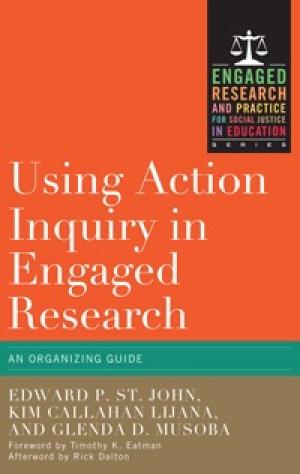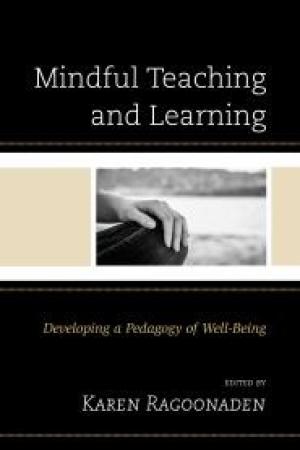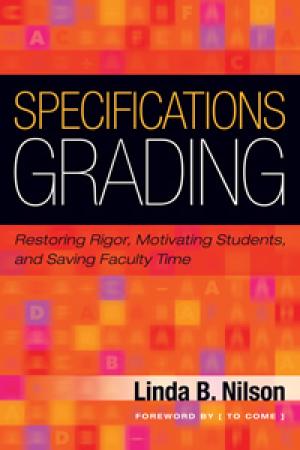Resources by Jennifer E. Kryszak

In Using Action Inquiry in Engaged Research, Edward P. St. John, Kim Callahan Lijana, and Glenda D. Musoba offer readers a guide for organizing and using information for social justice in education. The authors pair a description of the Action Inquiry Method (AIM) with practices for the reader to use in his or her own context. In addition, the authors employ specific cases to explicate the relation of practitioners, institutions, partners, and researchers. Each case is followed by questions for individual or group reflection. The book includes sections written by researchers and practitioners, which models the varied roles and approaches to AIM as well as the benefits and challenges of collaboration in engaged research for social justice. Readers are challenged by an integrated understanding of the role of education and policy in social justice. The authors beneficially emphasize the K-16 pathways and the position of underserved populations. The authors remind the reader that the context of the cases and other examples in the text do not necessarily correlate to their own context. This recognition that there is no one right answer to an educational need is underscored by an emphasis on the experimental mode. Readers are encouraged to learn from failure instead of being paralyzed. Moreover, the authors provide ways for practitioners and researchers to challenge systems and practices that prevent justice. Indeed the tone of the book itself enables and encourages practitioners and researchers as they begin to engage AIM for the first time or collaborate in a new setting. As “an organizing guide,” Using Action Inquiry provides specific questions for the reader to use in assessing a situation and organizing a response. One of the possible weaknesses of this guide is that it does not provide an extensive introduction to AIM; however, the guide’s emphasis on social justice in education would beneficially complement another introduction to AIM. For scholars of religion and theology, Using Action Inquiry offers a way to question the role of university programs in relation to the pursuit of social justice. The authors outline specific ways in which programs and individuals can potentially assist underserved populations. Additionally, the structure of the guide promotes personal and group reflection. Consequently, university personnel could beneficially engage Using Action Inquiry as they attempt to restructure programs, recruit and retain students, and promote an institution’s mission. Moreover, the guide can be used in graduate courses to introduce students to AIM. While the text focuses on education research, those interested in other fields can apply this information to their own research context. In particular, the chapter on “Learning from Experience” offers practical suggestions for how to engage institutions and partners and to reflect on one’s role as a researcher. For those introducing theology students to ethnographic methods, Using Action Inquiry would encourage students to reflect on the ethical questions involved in research as they seek to promote social justice. At a time when higher education is in a state of transition, Using Action Inquiry in Engaged Research encourages practitioners and researchers to collaborate to recognize the needs of underserved populations, organize for change, and promote social justice in education.

Mindful Teaching and Learning challenges educators to be attentive to their own self-knowledge and location in the classroom. Emphasizing a transdisciplinary approach, the authors articulate the value and effectiveness of mindfulness-based practices and the possible benefits for pedagogy and curriculum. The editor contends, “The content of this book examines ways in which to develop habits of mind, courses of action, as well as a curriculum of study that would support educators as they cultivate competencies for thriving and coping with the modern demands of being a teacher” (viii). The first three chapters draw on evidence-based research to argue for the value and effectiveness of mindfulness-based practices. Elizabeth R. Mackenzie assesses previous research across disciplines in order to craft a compelling foundation for the need for and benefits of mindfulness training for students and educators. Karen Ragoonaden draws on Eastern contemplative practices, indigenous wisdom, and mindfulness to demonstrate the positive impact of mindful practices on one’s personal and professional life. Through her self-study, Ragoonaden reveals the impact of mindfulness on educators and students. Kathryn Byrnes and Tom Bassarear provide pedagogical techniques to demonstrate the effectiveness of contemplative pedagogy. They discuss techniques that arise from their own contemplative practices and urge readers to similarly engage practices to be meaningfully incorporated into class sessions. The second portion of the book considers the implementation of mindfulness-based practices in leadership, curriculum, and field experiences. Sabre Cherkowski, Kelly Hanson, and Jennifer Kelly consider leadership as informed by mindfulness. Drawing on their own experiences in educational research, in leadership in a school district, and in the classroom, the authors articulate mindful leadership as being rooted in knowledge of oneself, assisting others to live and work better, and being nurtured in relationship with colleagues. Geoffrey Soloway draws on his qualitative research on mindfulness-based wellness education programs to offer insight into curriculum design and implementation. Significantly, he offers suggestions for how to assist students in drawing connections between mindfulness and their own lives. Margaret Macintyre Latta examines field experience for prospective teachers as an opportunity to attend to the relation between theory and practice in curriculum and to implement mindfulness in the classroom. Overall, the authors contribute to wider discussions in pedagogy as they question the goals of education and emphasize a holistic approach to the individual and learning in contrast to a dominant emphasis on content. Mindful Teaching and Learning challenges faculty to focus on the learning evident in the present moment. The chapters draw on a wide range of research and methodologies (self-studies and qualitative research). In particular the use of self-studies by several of the authors and reflections by educators on their own use of mindfulness encourage the reader to reflect on his or her own practices and the possible impact of mindfulness on an individual’s personal and professional life, pedagogy, and students.

Concerns about mastery of learning outcomes or competencies, grade inflation, student motivation, and faculty time compel reflection on how we assess students in higher education. In Specifications Grading, Nilson critiques the traditional, point-based grading system and argues that students should be assessed on whether they have mastered course learning outcomes. She proposes specifications (specs) grading as a positive alternative to the current grading system. Nilson makes the case for specs grading in ten chapters. Chapter 1 examines critiques of the traditional grading system and offers fifteen criteria for judging a grading system. Chapter 2 briefly introduces learning outcomes and course design. In chapter 3, Nilson shows that grades should correspond to whether a student has mastered learning outcomes. Nilson ties grades to specific learning outcomes: a student can earn higher grades for demonstrating the amount of their learning, mastering more learning outcomes, or both (25). In chapter 4, Nilson argues that assessments should be graded pass/fail because this raises the expectation for a passing grade to the B-level. This also potentially reduces faculty time spent grading as it eliminates the need to justify partial credit. In chapter 5, Nilson outlines some aspects of specs grading: a single level rubric, faculty clarity on assignments and assessment, student choice, and opportunities to resubmit work. Chapter 6 describes how to convert specs grading to final course grades by either employing a point system for assessment or requiring students to complete certain assessments (bundles or modules) to achieve a particular course grade. Chapter 7 offers examples of courses that employ specs grading in diverse disciplines. After addressing theories of motivation, chapter 8 demonstrates how specs grading can motivate students to master learning through student choice. Chapter 9 explains how to design a specs grading course and introduce students to this grading system. Chapter 10 evaluates specifications grading according to the fifteen criteria set out in chapter 1. Among its strengths, Specifications Grading offers experiential evidence from faculty as well as examples of specs grading from diverse disciplines. These examples encourage faculty to creatively re-envision their courses. Moreover, Nilson challenges faculty to draw on adult learning theories and motivational theory to promote mastery of course outcomes and encourage students to achieve their potential. Nonetheless, Nilson recognizes faculty’s hesitation in committing to a new grading system. As a result, Nilson describes (pure) specs grading courses as well as blended courses: courses that employ a mixture of point-based assessment and specs grading. These options enable faculty to slowly adjust to the new grading system or to attend to departmental or institutional grading expectations. Nilson argues provocatively for the ways specifications grading motivates students and raises the standard of student work. To do this, faculty must know their expectations for student work and be clear in the directions for assignments. Moreover, faculty must expect students to fulfill those expectations – to take responsibility for their own grades and master course outcomes.